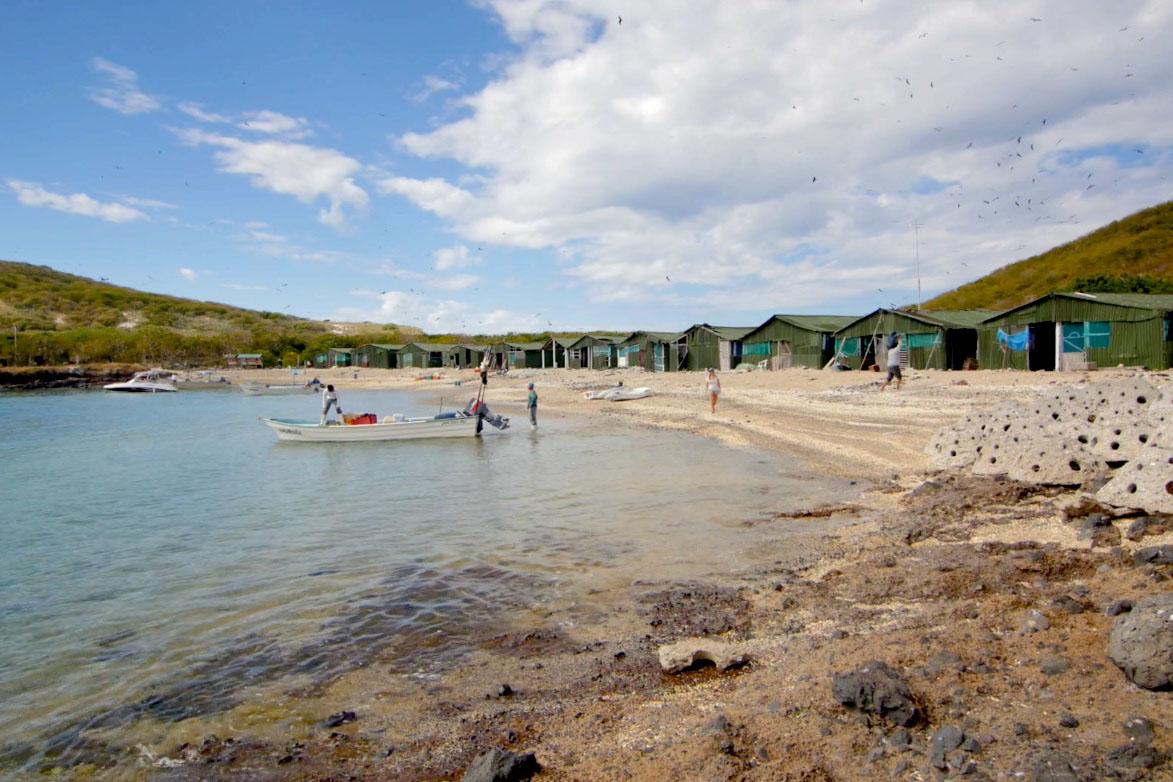“Mexico has many good laws.” Professor Martín Soto leans back from behind a clump of papers on his desk and sighs. “It’s the enforcement that lacks.”
I’m sitting in Martin’s office on the second story of the Marine Science and Limnology Institute in Mazatlán, Mexico. The building hangs on the edge of a cliff above the turquoise water, under the second tallest lighthouse in the world. Martín’s lab, which focuses on environmental chemistry, has a view to the thin curve of Mazatlán’s miles of beach speckled with hotels and condos. I’m talking with him to get a big picture view of how Mexico’s oceans might react to the increasing pressure of global warming.
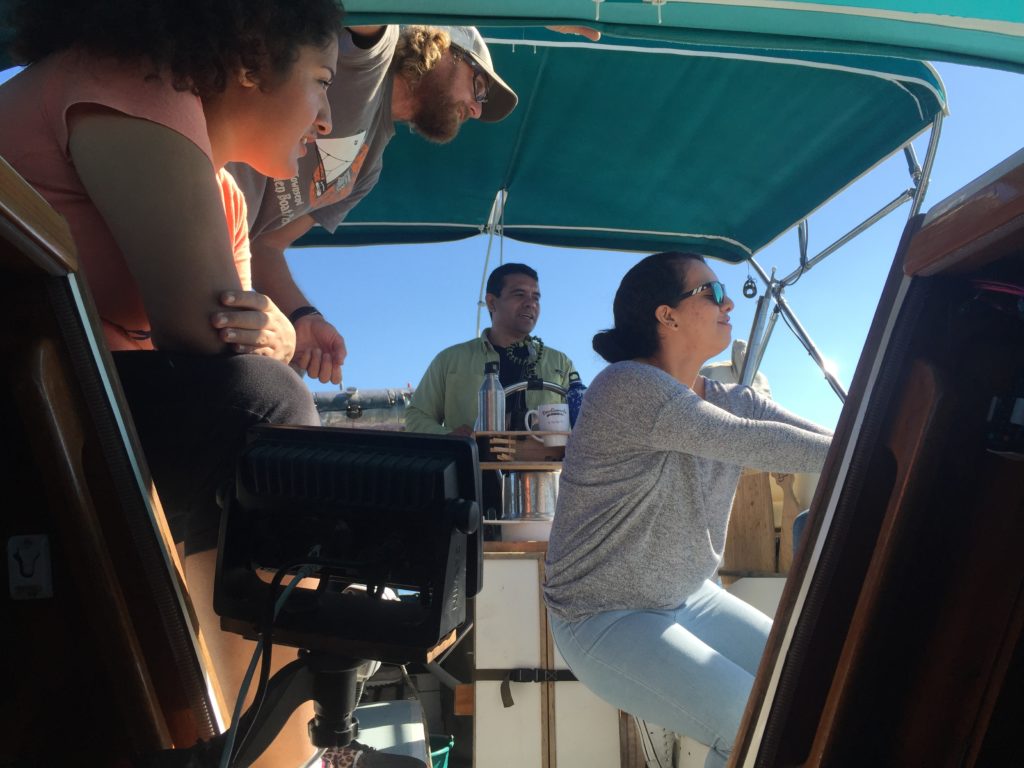
I have heard Martín’s simple statement repeated by nearly everyone I speak with in Mexico. It’s easy to pass great laws; it’s an entirely different ballgame to enforce them. The national system of bribery links all the way back to the Spanish empire 500 years ago, and it can be tough to change the entrenched order—particularly when 58 percent of the population lives in poverty.
I had just dropped Martín and four of his students off at their lab after sailing with them across the Mazatlán waterfront. Tomorrow, my partner Josh and I will sail for Isla Isabel, a national park and World Heritage Site 90 miles south and 20 miles offshore. I’m accustomed to the challenge of enforcing Mexico’s environmental laws, so I’m not encouraged by these labels. What’s more, fishing is allowed in the national park, and there is an abandoned research station on the island. Most of Mexico’s coasts and shorelines are smothered in plastic bags, plastic bottles, and chip bags, the reefs are picked clean, and the wildlife ashore competes with domestic animals for space and food. So why should Isla Isabel be any different?
***
Four thousand pairs of black eyes stare at me. Only inches above my head, and filling every possibly supporting space in the squat trees around me, thousands of Magnificent Frigatebirds click and sweetly whistle. They are coal black with wings as pointed and angular as a pterodactyl. No other bird on earth weighs this little but still has a wingspan of nearly eight feet. Males, females, and juveniles are easy to identify: females have a v-shaped white breast, juveniles have a white head, and the males have bright red skin on their throats, which they blow into a giant balloon to attract females to their roost. Throughout most of our journey in Mexico, we have seen these aerial pirates soaring around our boat, plucking fish from the sea or deftly stealing food from other birds. They can’t float, so their acrobatic displays chasing birds and fish at the surface are all the more breathtaking knowing that their food source—the sea—could also spell their death.
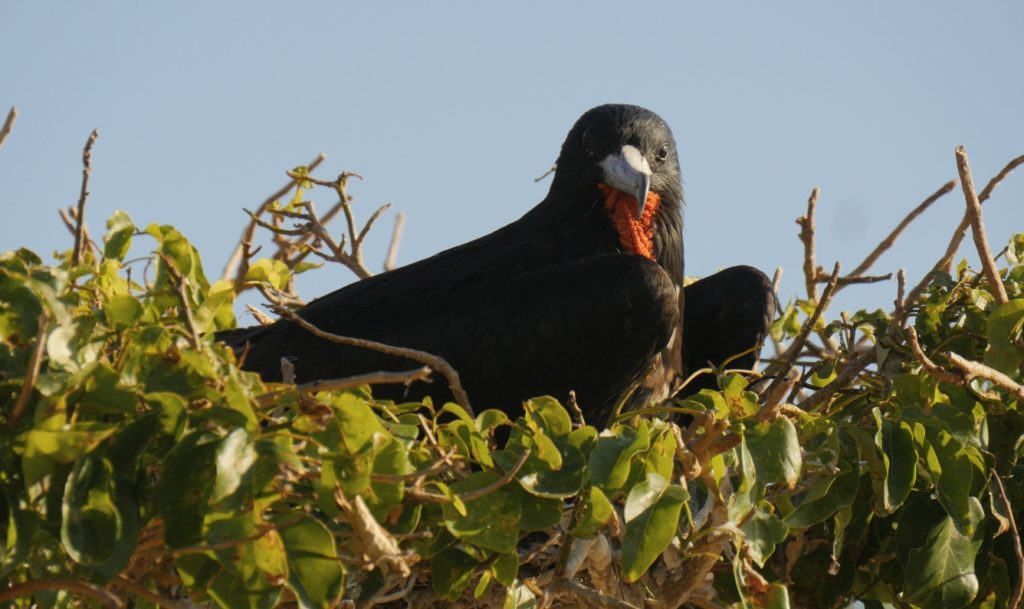
But I have never been eye to eye with a Frigatebird before—all others I have seen would fly away if I were within 50 feet. Many of the birds all around my head have a ridiculous looking baby smooshed under their proud black chests, a white puffball peeking out into the world. Now, there’s no alarm in their round eyes, which glisten like two matte black pebbles. I’m giggling in disbelief, exchanging long, curious stares with the chicks. The air is filled with the sour, unavoidably pungent smell of whitewash; there isn’t much undergrowth beneath the trees, probably for the quantity of excrement on the ground.
We got a hint of this bird paradise to come as we approached Isla Isabel at dawn. When night fades to day on the sea, it’s difficult to tell the difference between clouds and land—they both appear as amorphous gray shapes on the horizon. As the sunlight filtered in pink through the clouds, sea birds confirmed that we approached an island. Terns dive-bombed fish, like daggers into the sea, perfect torpedos that also fill the air with their chatter. Frigates soared on pointed black wings around the top of our mast, toying with hope of landing on it. This is probably impossible for these prehistoric-looking giants, since they would have to alight on a six-inch oval that pitches violently in the swell. Frigates ride the rising heat of the day, sometimes going for hours without pumping their wings with their slow, deep beat, so they continued to cruise over our mast effortlessly. It felt like we sailed into the most happening bird café on the Pacific, complete with noisy conversations flying about our mast about breakfast under our boat.
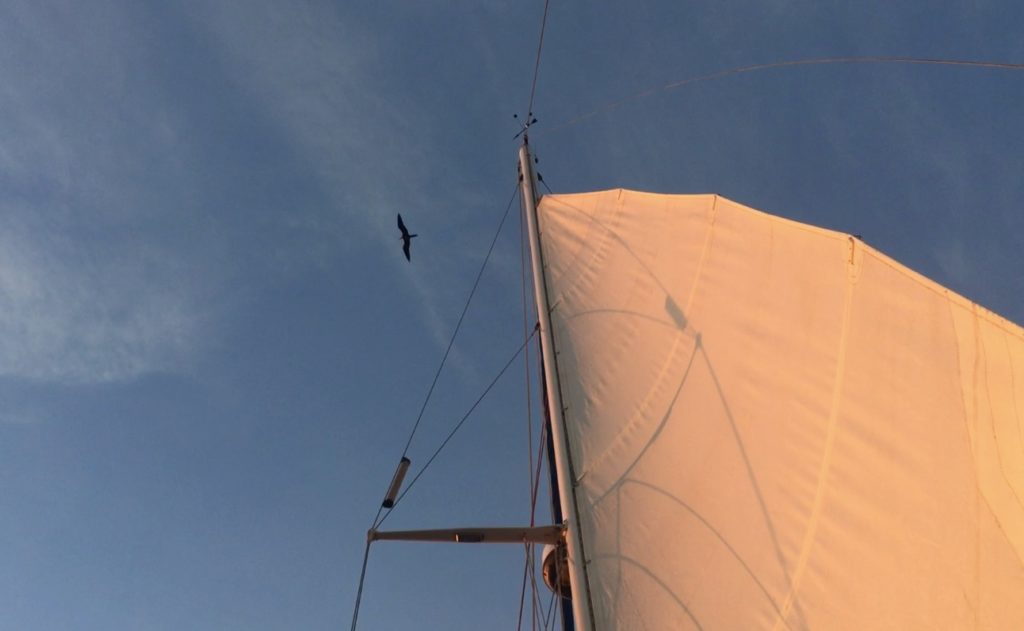
Rough seas from the previous multiple days of wind tossed the boat from our quarter, hitting us diagonally from behind, making the boat trip awkwardly on the swell. Daylight crept around the edges of Isla Isabel, which we could barely distinguish as a tiny lump in the sea. Twenty miles offshore, the land isn’t visible, making the 1.5 square mile island feel even smaller. But the birds made our sail feel quite social.
As we sailed the eastern edge of this offshore island, we saw our next clue to the bird life we were about to experience: 100-foot-high rocks, bleached brilliantly by whitewash—in other words, a monumental amount of bird poop. This island has gained the nickname “The Galapagos of Mexico,” and with our sunrise escorts and these white spires, we got the hint.
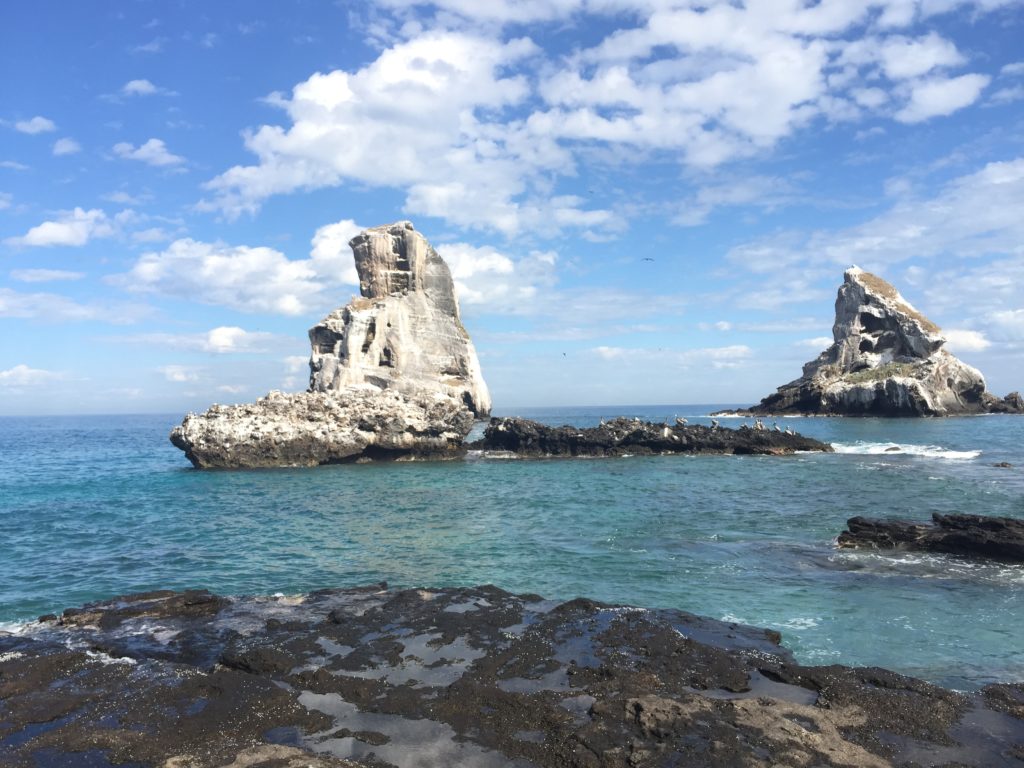
Like many places that are off the typical sailing routes, other boaters discouraged us from sailing to Isla Isabel. The anchorage on the south end has eaten more sailboat anchors than any other place on the Pacific coast of the Americas. The smell from the bird excrement is supposedly overwhelming, and the ensuing no-see-ums tortuous. In addition, I wasn’t sure I would even find anyone here to talk with—the island research station is abandoned. However, based on our experience sailing the lost coasts of Sonora and Sinaloa, we know that care and attention to conditions, above and below the surface, brings the hidden places to light while keeping the boat safe. We may not get as much sleep on overnight passages or in anchorages where the wind and swell toss the boat through the night, but these quiet places store the secret stories of change in Mexico.
When the anchorage comes into view, it is surprisingly tiny, especially with three other surprisingly intrepid boats already crowded into the slight cavity on the south side of the island. The southern swell that we barely felt underway meets the steep headwall on shore with a dramatic crash of whitewater dangerously close to where we must anchor. As we slowly circle into the anchorage, an older man flies out of his cabin and into his cockpit, yelling.
“There’s a rock! There’s a rock just fifty feet to your left!” On the bow, I was watching for a shallow rock we read about in our guidebook, but I see nothing. The man insists the rock is five feet below the surface, though the guidebook and charts say twelve. Our boat is seven feet deep, so this is an important discrepancy. Yelling rock! rock! while waving one’s hands may not be the most productive way to protect our boat, but it was very effective at raising my blood pressure. We continue to circle the unfamiliar water, searching for a safe spot to drop our anchor.
This anchorage swallows so many anchors—and often has such clear water—because it is an extinct volcanic caldera, with a small lake the remnant of the collapsed center. Instead of sand, black boulders line the sea floor. Anchors are designed to dig into a soft substrate and bury themselves further with increased pressure. But in rocks, they can either fail to catch or catch so well that they can’t be pulled up. We have 300 feet of chain attached to our anchor, and this could further wind around rocks and make it impossible for us to retrieve our anchor. This means that if we had to pull our anchor quickly in for some dangerous event, we couldn’t do it—and no one wants to jettison thousands of dollars of chain with an anchor, then be without either at the next stop.
We finally decide to drop the anchor using rope rode instead of chain, hoping that they rope will not wrap around underwater rocks. (We would anchor four more times in the next three days, lose an anchor, but ultimately leave with an extra.)
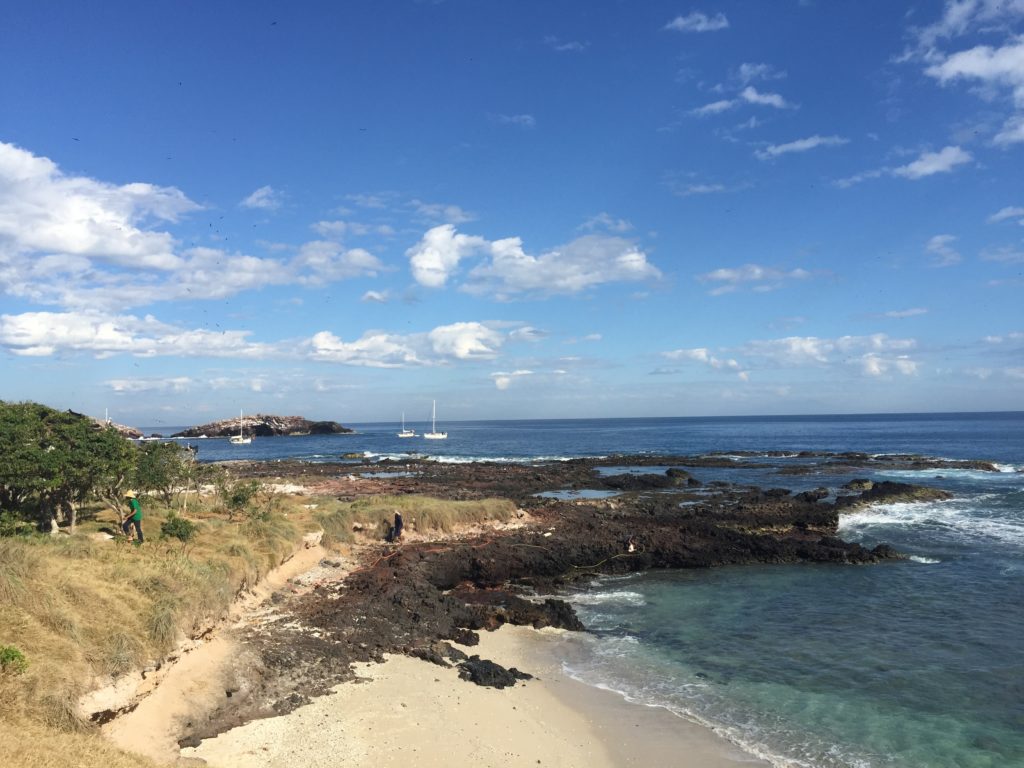
This is the clearest water we have seen in over 2,500 nautical miles. We can see the bottom 40 feet under our hull. Once we cut the motor, the wind and the choppiness in the anchorage start to abate, Josh and I jump into the 80 degree F water. Josh freedives (staying underwater with only his breath) on the anchor to check the conditions and security, and I snorkel around in search of the mystery rock that threatened our hull.
When I found it, goosebumps of wonder cover me: this small mound is home to thousands of colorful reef fish, live coral, and purple sea fans. I had not seen anything like this yet. The clear water can be explained by being offshore, away from runoff from land. But the abundance of fish, and their diversity, left me wide-eyed under my mask. Even without a fishing ban, could the park be responsible for this underwater habitat?
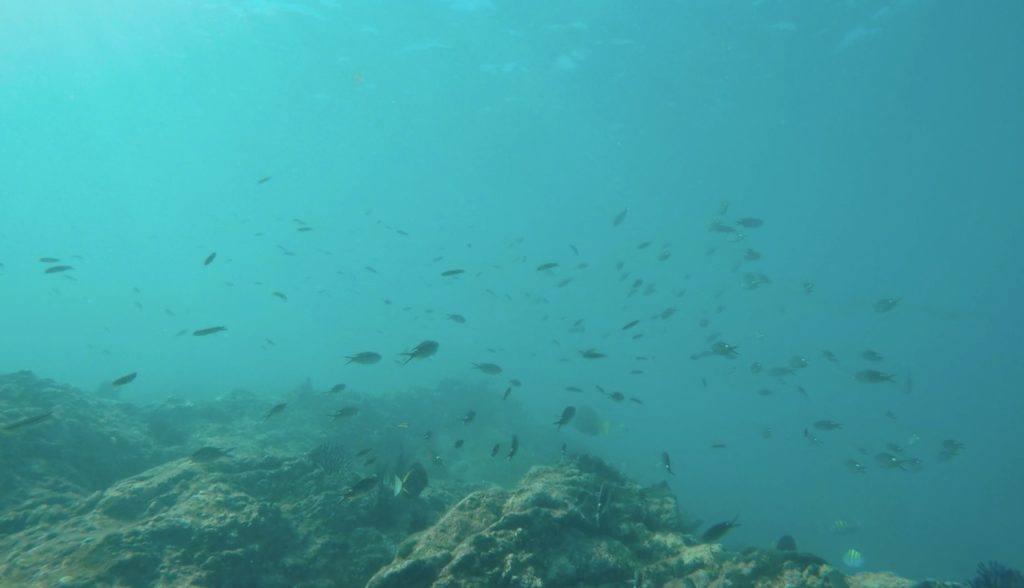
I see a couple of pangas, the open, outboard-powered boats of fishermen, disappearing into a cove next to the anchorage. They sped in from the horizon, probably after a night fishing at sea. Exhausted but curious, I launch my paddleboard to quickly get to shore to walk around the island. Although the surf pummels the rock walls lining the anchorage, the cove provides passage for shallow draft pangas and people looking for a safe spot to reach land.
The paddleboard slides onto the pebbly beach with a gentle push from the swell. I sink up to my ankles into the rocks and sand as I pick up the board and walk it up the sloping beach above the high tide mark. Pieces of white coral mix with the coarse sand and rock. I can’t normally leave the board unattended for fear of theft, but the only sign of humans are the identical green corrugated tin shacks lining the curve of the beach: a strangely quiet fish camp. I make my way west, into the squat trees at the edge of the beach.
I meet the Frigate audience of thousands for the first time as I step off the beach and into the trees. While another thousand birds circle on the rising heat of the day above the island, every tree supports at least ten of these blinking giants—and these are small, squatty trees. I walk a well-worn path through the brown grass and the trees stained with whitewash to what looks like a giant concrete gazebo tucked into the steep western edge of the island.
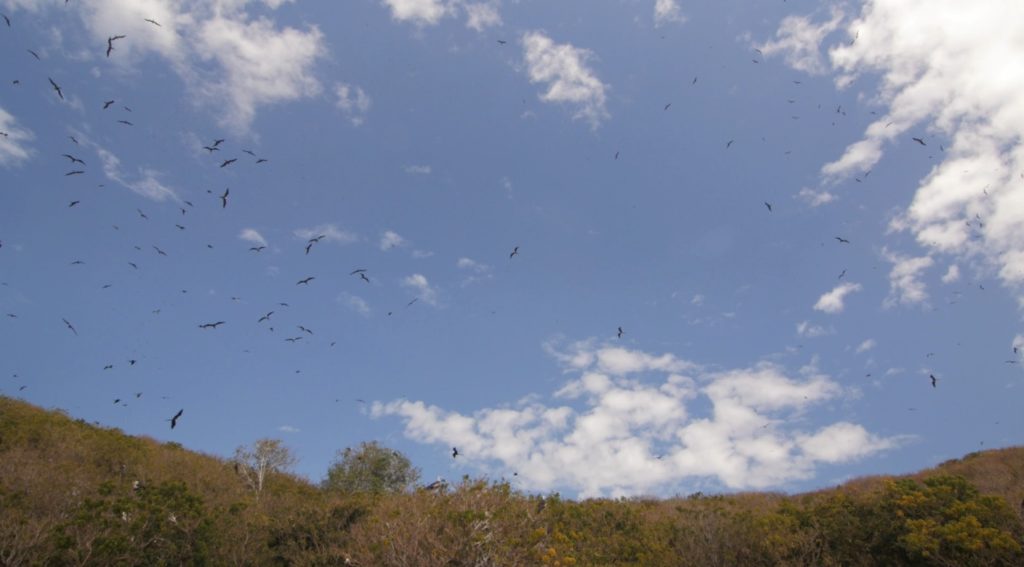
When I pictured a research station, I did not imagine an open-air building topped with a massive concrete pyramid with a hole in the center. I shuffle my feet to tap off some of the sand before I step onto the concrete slab—that is covered in inexpensive tents. Long tables with bright plastic cloths line the edge of the building with a view to the turquoise sea.
“Hola?” I walk tentatively toward the tents.
A man emerges from the only hallway wearing a tan sunhat and the square glasses shaped like those popular in the ’80s. He wears the same expression as the birds: unthreatened and unthreatening, slightly protective but mostly curious.
This is Julio Mata. Julio was a fisherman on the island before it was turned into a national park and World Heritage Site, 13 years ago. Julio gradually came to the idea of running an ecotourism company on the island—and that is what he does today. The tents are for his guests; Julio and his guides and cooks cram into one of the dirt-floor shacks on the beach.
Julio and his family would end up reshaping how I think about Mexico’s parks and tourism—and the country’s simmering power to adapt to climate change.
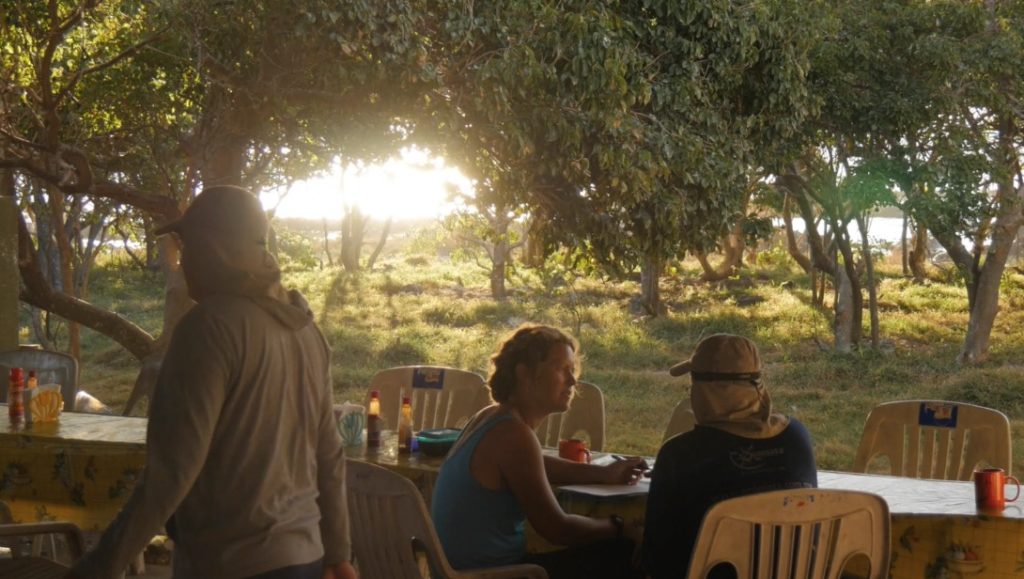
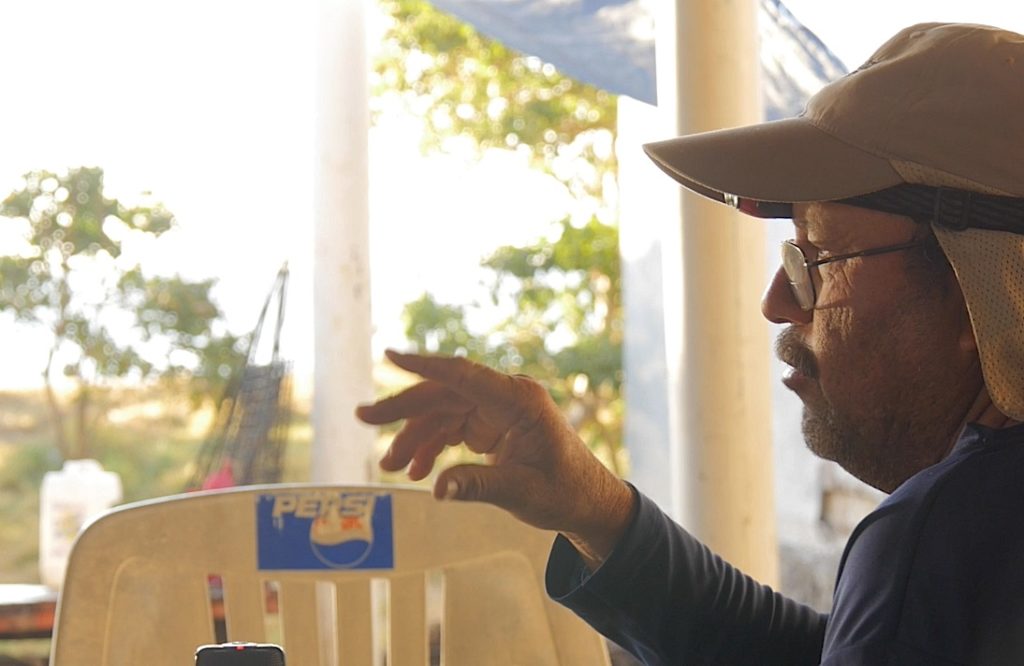
***
It takes me three days to track Julio down again after we met at the research station; he was always out on boats or shuttling groups from the mainland to the island. Multiple groups of school kids arrived for a day, commuting over 20 miles of open ocean in open boats, and Julio would teach them about the natural history of the island before showing them a cliff jump—which is presided over by families of blue-footed boobies, the local experts on diving into the water.
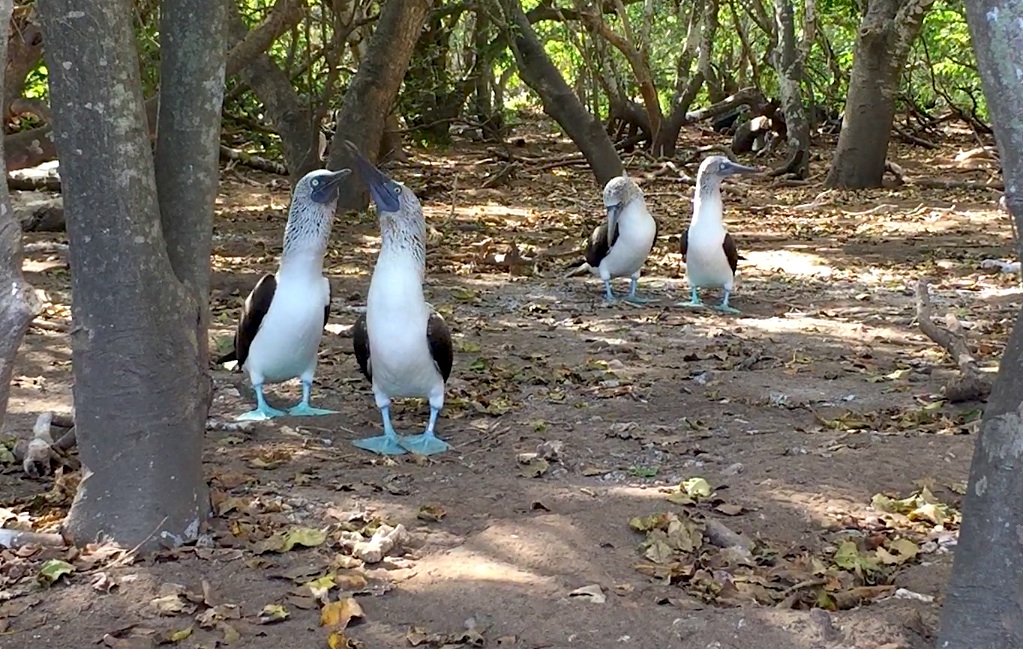
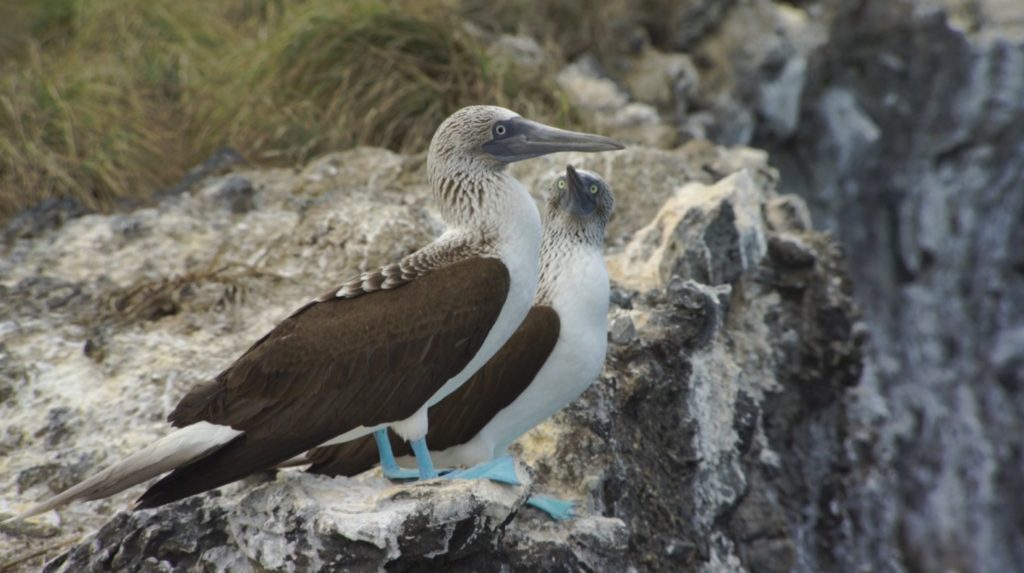
After missing him every time I visited shore, we couldn’t wait another day to meet with him: the swell was becoming more powerful, thus threatening to push our boat into the wall of crashing waves. The clear water has been replaced with turbidity from the swell. We had replaced our main anchor line with chain again and used the rope rode for a stern anchor—which cut lose after only 16 hours underwater: a rock sawed through the rope. Josh was able to dive in fifty feet of water to rescue the anchor (and find another abandoned one), but it was disconcerting. And the sleeping conditions are close to impossible now.
We row the dinghy to shore this time, and when I try to catch Julio, he had already departed with a group of divers. The three women preparing and setting out food for the twenty-or-so divers on the island ask us if we could wait—they would be back for a late breakfast. Determined, but also aware that we need to leave enough daylight to get to our next anchorage sixty miles away, I agree—and also get them to talk with me as they prepare the food.
Aurora, Josefina, and Yolanda rise at 5am every day to prepare breakfast, and their daily chores aren’t done until 10pm at night. Josephina is Julio’s sister, and Yolanda is the wife of an island fisherman who passed away. Aurora has been coming to the island for sixteen years, starting as a cook for the fishermen before the national park designation.
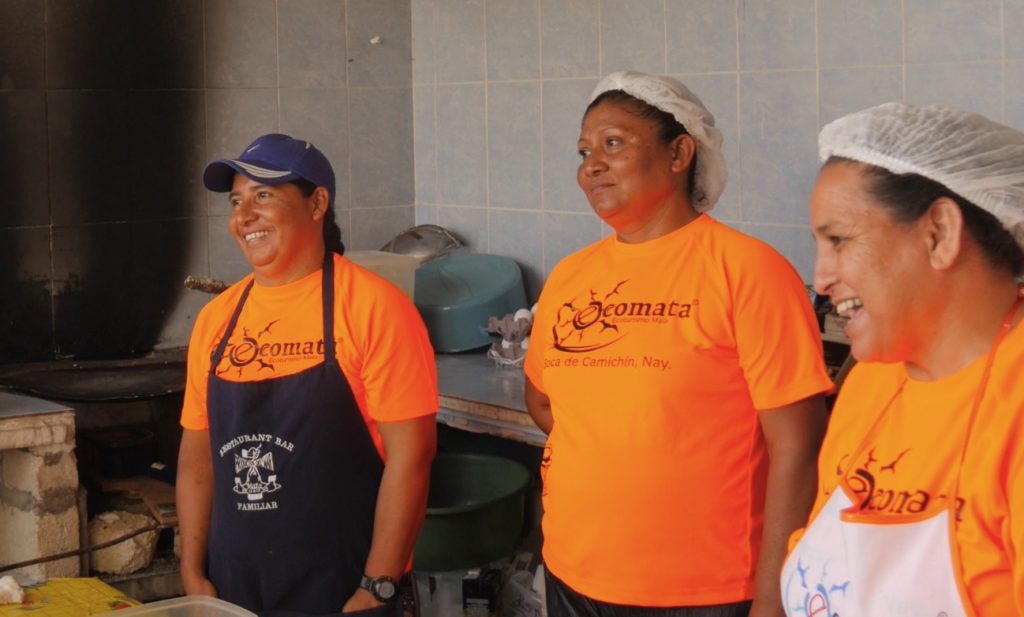
When I interview women, they often defer to a man’s opinion, whether he is there or not. But Aurora is different—she speaks with confidence about the changes she had seen on the island over the last sixteen years. She tilts her chin up and smiles as she talks; she seems pleased to have a space for her knowledge to be shared. Her smile and tone mesmerize me: there’s a twinkle of mirth in it.
“When they declared the island a national park, you couldn’t smoke anymore,” she recalls. “They used to introduce banana trees, pineapple plants, and coconut palms. But those were all removed. They cleaned everything.” The women all nod emphatically. There was so much trash—and it was cleaned up. There were cats on the island, and all of them were removed, leaving only the rats as introduced mammals. But the lack of cultivated plants and domestic cats meant a remarkable, and rapid, return of the native trees and birds. The native iguanas were able to flourish as well. Underwater, people stopped robbing coral from the rocky reefs, and by-catch from the fishers no longer clogged the bottom and shore.
The old research station-turned-camp kitchen fills with filtered morning sun and cheerful people as the group returns from their morning dive. I loiter and watch as Julio jokes easily with his clients and drinks Nescafe out a florescent orange coffee mug printed with the name of their company, Ecomata. He’s curious about our interview, so he gets me a cup of coffee and we sit down at the plastic tablecloth with a view to the entire ocean.
“How does a person go from a fisherman to an ecotourism business owner?” I ask Julio.
“Educated people,” Julio says with a wry smile. Before the national park designation, Julio would return to the fish camp with his daily catch and talk with researchers from the National Autonomous University of Mexico (UNAM) and the National Commission of Protected Natural Areas (CONANP). Slowly, Julio’s thoughts about the care and use of the ocean changed. With encouragement from the researchers, Julio started his business—which, ten years later, thrives on educating people with some of the same research generated by the UNAM and CONANP investigations.
The changes with the park designation were good ones, Julio tells me. There were many tiburoneros, or shark fishers, who left hundreds of heads and carcasses to rot on the beaches. The stench, combined with uncontrolled human excrement, was nearly unbearable. But the shark fishing and disposal was banned in the park, and the fishermen that remained set up outhouses. No trace of this past remains, except in Julio’s story.
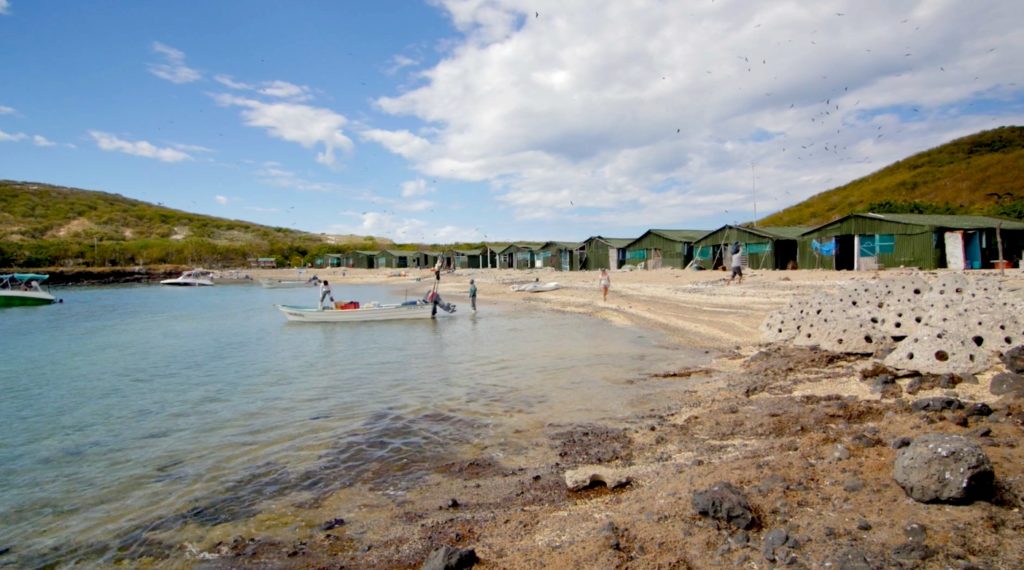
It’s obvious now that this relatively recent park designation has transformed the island. The influence of national researchers and local fishermen has guided this transformation—and made it visible to many people with the creation of Ecomata.
Is the story of Isla Isabel and Julio a clue to Mexico’s possible resilience in the face of climate change?
As I continue to ask Julio increasingly specific questions about the impacts of climate change on this island and his hometown twenty miles away on shore, I’m amazed by his observations and knowledge of the changes below the surface. He tells me so much coral has died over his lifetime (this is the first time anyone has mentioned this to me,) as well that the calcification of the oysters, for which his hometown is famous, is changing, making the oysters more difficult to cultivate.
But it is only after I stop asking my questions, stop directing my interview and just start talking with him, that Julio shares the accumulation of a lifetime of observation and knowledge about his environment.
“Have you seen them—the little bottles of anti-bacterial gel?” he asks me. I nod. “Everyone here, everyone has them,” he says, hanging his head. “And these little plastic bottles are everywhere on the beach now. People don’t think about or realize the impact that they have—until they get here and we can show them.”
“The environment is getting destroyed,” he continues. “Kids from the city—they don’t know much about the destruction. They can’t see it because they are never exposed to the wild world. That’s why we bring them here. We need more education for a better understanding of the environment.”
But his next sentence, as clear as the water around Isla Isabel, stuns me.
“Everything comes from the rivers.” It’s such an unusual statement from a person devoted to the sea; it’s so incongruous that a shiver runs through my body. It’s a thrill to me as a researcher—this man, as a result of his life on the ocean, has widened his gaze to the broader world to find the deeper source of the problems of his society. I ask him what he means.
“People don’t know what they’re cleaning the bathroom with,” Julio continues, referring to what gets washed away into the water on land. All rivers lead to the sea. He’s saying that if we poison the blood, the organs that keep the body alive will eventually die.
Julio turns the conversation pointedly to his ultimate passion. “We just don’t have the education we need.” His tone is calm while his eyes are on fire—the sort of slow burn that has smoldered for years. “We need biologists to teach people: the solution is more connection.”
What this former fisherman is telling me is that the problems from the sea start on the land, with something as mindless as the flush of a toilet. But built into his problem is the solution: education. This education happens when people learn about the impact of chemicals in their lives, whether from the bathroom or the tailpipe. This approach is revolutionary for a top-down driven system like Mexico because it makes the solutions tangible and local.
Julio’s entire extended family depends on the restored ocean at Isla Isabel. On the mainland, climate change threatens their community and oyster beds with rising waters and ocean acidification. The cleanup of Isla Isabel has provided them with a way to not only diversify their economy, but share a reason to restore and preserve natural ecosystems: divers, families, and school kids can immerse in the clear water and see why they should keep their rivers clean. They have both literally and figuratively joined their family with the environment: Eco-mata. The ecological family.
This national park didn’t just transform its land and ocean, it changed Julio—who in turn may transform the thinking of divers and thousands of schoolchildren.
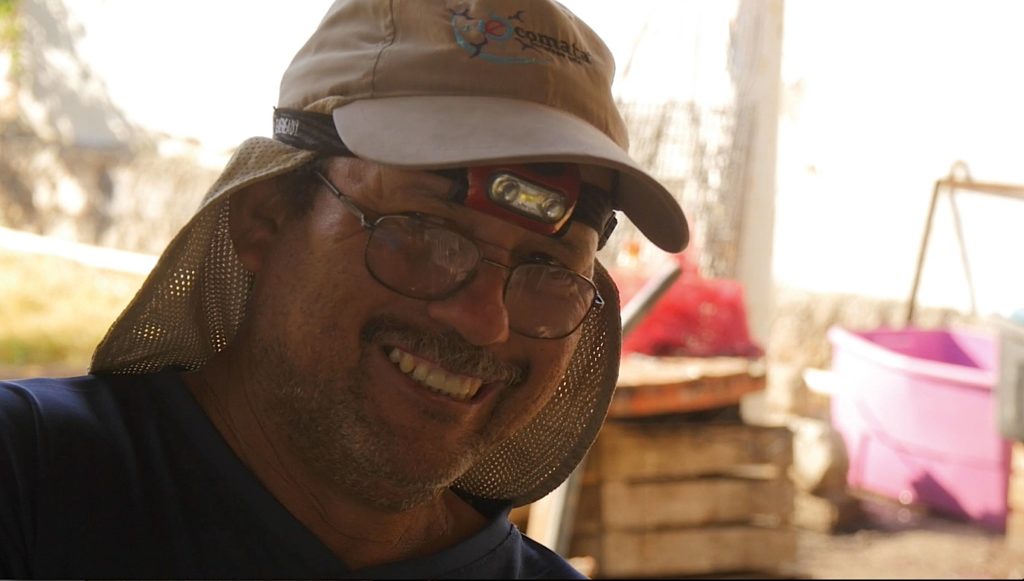
***
As I walk back on the path to the dinghy on the beach, I see a Frigate chick on the ground, small and fluffy white, completely vulnerable and facing near-certain death out of the nest. As a biologist, I have to walk by with a nod to the cycle of life, though it still makes my heart ache. But suddenly something Julio’s said echoes in my head:
“People feel sad when they see a baby bird on the ground, dead of hunger because the parents can’t feed it. But they don’t make the connection that humans die of hunger because their parents can’t feed them. These are the kind of connections we can make when people see the natural world.” It’s not just connecting problems with solutions: it’s connecting compassion with both.
Julio looked toward the filtered sun showering the table, his quiet determination meeting the light: “When people can see this, I’m satisfied because the natural world teaches them connection better than anything I can say.”
I look up from the chick, into the blue sky at thousands of soaring birds, and think of all the toilets flushing at this moment. On the beach, Julio steps into a panga, headed for shore to pick up forty kids from Mexico City.

